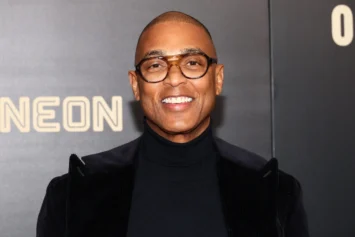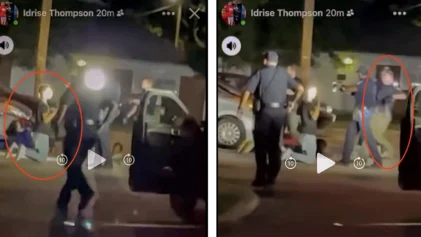Canadian teenager Maryam Tsegaye remembers sitting in her dad’s lap as a young girl and asking him about the solar system.
“He would have a piece of paper and a pencil, and he would draw out the orbit of the planets,” she recalled.
She was fascinated by the thought that there are other worlds out there. But as she grew, her fascination soon outpaced her father’s knowledge. And when he could no longer answer her questions, he taught her how to research to find the answers herself.
Later on in her childhood, Tsegaye asked her mother about how the seasons change. Her mom took her to the library and helped her find a book explaining the equinoxes and solstices.
Her parents’ nurturing of her natural inquisitiveness propelled Tsegaye into a lifelong love of science.
“Just asking the question why, ever since childhood,” she told Atlanta Black Star. “Like any 5-year-old asks why. But not many 5-year-olds get encouraged to ask why, again and again and again. But I was lucky enough that I was still encouraged to ask why for anything. And my parents would guide me to resources — research, books, and other sources — to answer these questions myself and to learn about how things work.”
Tsegaye, a 17-year-old high school senior, recently made a light-hearted video breaking the mysteries of quantum tunneling down into plain, understandable CliffsNotes-like chunks.
The nearly three-minute video earned her the grand prize at the Breakthrough Junior Challenge, an international competition that tasks students to come up with creative ways of breaking down complex theories of physics, mathematics, COVD-19 or life sciences.
“I didn’t really believe in it,” she said of the first-place victory, which was announced Dec. 3. “It was just so big and so above me that it took a while to absorb the effects of all that. And it’s still a lot to think about right now. But in that moment, I was just shocked.”

This was Tsegaye’s first year competing in the Breakthrough Junior Challenge, a global science fair for youth between the ages of 13 and 18. The exhibition gives students a chance to showcase their grasp of difficult scientific principles.
Tsegaye, a native of the Canadian province Fort McMurray, Alberta, initially intended to focus on entropy, a law of thermodynamics. But after watching a video on entropy, she decided it wasn’t a good fit for her.
Then in mid-June, less than two weeks before the deadline to submit her entry, Tsegaye was introduced to the notion of quantum tunneling. She was fascinated and decided she could tell a more captivating story focusing on that scientific concept.
“It was just something about, ‘Oh, you know, once the universe is ultimately dead, something called quantum tunneling will happen and the universe will restart,” she explained. “And I thought, ‘Well, wait a second, what is quantum tunneling?'”
In her YouTube video, Tsegaye delved into the behavior of electrons, protons and other sub-atomic particles on the quantum level, a microscopic scale even smaller than molecular science.
She used a blend of animations, diagrams, quick cuts and funny one-liners to simplify the intricate concept of quantum tunneling and disentangle “the stuff that makes up atoms.”
Tsegaye went in knowing that high-level scientific concepts like quantum tunneling can be intimidating, and those with a grasp tend to have an elitist mindset when explaining them. She sought to avoid that in her video and tried to communicate the subject matter in a more approachable fashion.
“I made sure in the video that I would speak as casually as possible, because I know that this concept, this topic is really, really advanced,” Tsegaye said. “If I lose you because I’m speaking down to you, I just didn’t want that to happen. You would lose interest and feel patronized. And so I also tried my best to avoid any scientific vocabulary, any formulas. Just to keep that gentle approach.”
Tsegaye started her video explaining how she was inspired to dissect quantum tunneling after watching her brother use a cheat-code to tunnel through walls on a video game. She said it’s possible to do the same thing in real life … on a quantum level.
Chemistry World, a monthly magazine, defined the theory as a quantum mechanics phenomenon when sub-atomic particles pass through energy barriers that they don’t have enough energy to surmount.
In quantum theory, the behavior of sub-atomic particles resemble interacting waves. It’s impossible to measure a particle’s exact location and momentum at the same time, a phenomena known as wave-particle duality. In her video, Tsegaye described it as the “split personalities” exhibited by sub-atomic particles
“Basically, they’ve got some serious commitment issues, and that means we can only guess where they might be,” she said.
Quantum tunneling is calculating the probability of how many particles can bore through a quantum barrier versus how many will bounce off the barrier.
Tsegaye likened the particles to a pair of six-sided dice and said they have to be rolled in order to dictate a particle’s position.
She closed by noting how quantum tunneling is what allows the Sun to release copious amounts of energy necessary to make life on Earth possible.
“Maybe the quantum world is telling us that when faced with an obstacle, there’s a small chance we can defy expectations and breach barriers,” Tsegaye said.
Julia Milner, co-founder of the Breakthrough Junior Challenge, called Tsegaye an “exemplary science communicator” and touted her ability unravel the complexities of quantum tunneling in a non-ambiguous way.
“Maryam created a unique, one-of-a-kind video that explained a complicated scientific theory using relatable terms and humor — an impressive feat,” Milner said.
This year was the sixth annual installment of the Breakthrough Junior Challenge. The field included 5,600 entrants across 124 countries.
The youth challenge was co-sponsored by the Breakthrough Prize, a star-studded awards event touted as the “Oscars of Science” that recognizes the world’s top scientists each year. Breakthrough also partnered with Khan Academy, a virtual platform that gives students online tools to use for learning.
The academy’s founder, Sal Khan, presented the award to Tsegaye via a Zoom video Dec. 3. He was joined by NASA astronaut Scott Kelly, one of the competition’s judges.
Tsegaye sat in a classroom at Ecole McTavish Public High School, where she’s a senior, and was stunned to tears when Khan broke the news that she won the competition.
“This is an absolutely life-changing moment,” she said. “Nothing’s going to be the same from now on.”
Tsegay became the first Canadian student to win top honors at the Breakthrough Junior Challenge. Her feat did not go unnoticed.
Canadian Prime Minister Justin Trudeau celebrated her achievement in a Dec. 4 retweet of her school’s announcement.
“You’re making us all proud,” the prime minister wrote. “I know you’ll continue to do great things in the years ahead, and I hope you know that we’ll all be rooting for you.”
For winning the contest, Tsegaye was awarded a $250,000 college scholarship, her science teacher got $50,000 in prize money and her high school will receive a new science laboratory worth $100,000 designed by Cold Spring Harbor Laboratory.
Tsegaye is still searching to find the college of her choice and said she plans to major in physics. Her dream is to one day have a career in science research and communication.
She’d never considered the idea of going to college abroad, saying it would cost too much. Now she says she’s working on college applications for a few schools in the U.S.
“It’s not jut me winning right now,” Tsegaye said. “It’s my school; it’s my teachers, my family, the city and even the country.”


